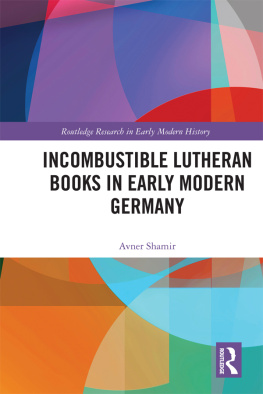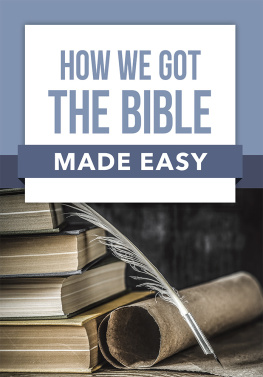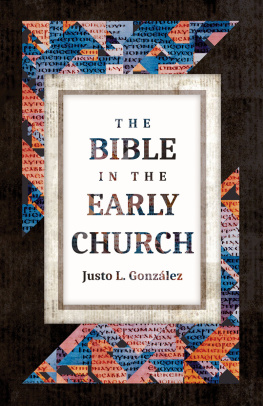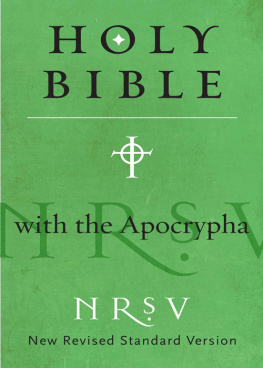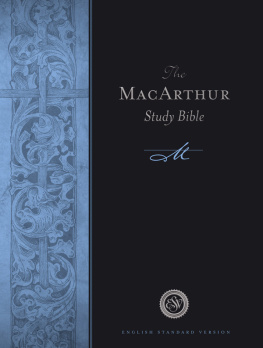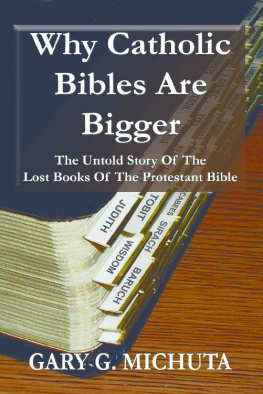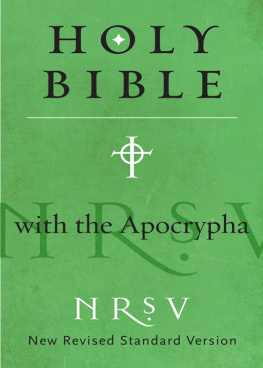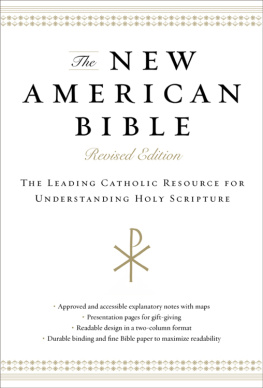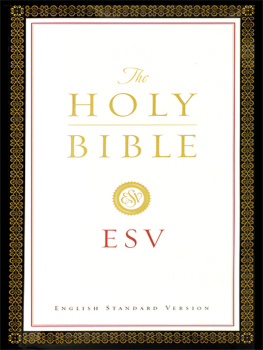English Bibles on Trial
The aim of this book is to explore antagonism towards, and acts of violence against, English Bibles in England and Scotland (and, to a lesser degree, Ireland) from the English Civil War to the end of the eighteenth century. In this period, English Bibles were burnt, torn apart, thrown away and desecrated in theatrical and highly offensive ways. Soldiers and rebels, clergymen and laymen, believers and doubters expressed their views and emotions regarding the English Bible (or a particular English Bible) through violent gestures. Often, Bibles of other people and other denominations were burnt and desecrated; sometimes people burnt and destroyed their own Bibles. By focusing on violent gestures which expressed resentment, rejection and hatred, this book furthers our understanding of what the Bible meant for early modern Christians. More specifically, it suggests that religious identities in this period were not formed simply by the pious reading, study and contemplation of Scripture, but also through antagonistic encounters with both Scripture itself and the Bible as a material object.
Avner Shamir is Assistant Professor at the SAXO Institute, University of Copenhagen, Denmark.
English Bibles on Trial
Bible burning and the desecration of Bibles, 16401800
Avner Shamir
First published 2017
by Routledge
2 Park Square, Milton Park, Abingdon, Oxon OX14 4RN
and by Routledge
711 Third Avenue, New York, NY 10017
Routledge is an imprint of the Taylor & Francis Group, an informa business
2017 Avner Shamir
The right of Avner Shamir to be identified as author of this work has been asserted in accordance with sections 77 and 78 of the Copyright, Designs and Patents Act 1988.
All rights reserved. No part of this book may be reprinted or reproduced or utilised in any form or by any electronic, mechanical, or other means, now known or hereafter invented, including photocopying and recording, or in any information storage or retrieval system, without permission in writing from the publishers.
Trademark notice : Product or corporate names may be trademarks or registered trademarks, and are used only for identification and explanation without intent to infringe.
British Library Cataloguing in Publication Data
A catalogue record for this book is available from the British Library
Library of Congress Cataloging in Publication Data
Names: Shamir, Avner, author.
Title: English Bibles on trial: Bible burning and the desecration of Bibles, 16401800 / by Avner Shamir.
Description: 1st [edition]. | New York: Routledge, 2016. | Includes bibliographical references and index.
Identifiers: LCCN 2016036043 (print) | LCCN 2016042968 (ebook) | ISBN 9781138200784 (alk. paper) | ISBN 9781315513973
Subjects: LCSH: Bible. EnglishHistory17th century. | Bible. English History18th century. | Great BritainChurch history17th century. | Great BritainChurch history18th century.
Classification: LCC BS455 .S525 2016 (print) | LCC BS455 (ebook) | DDC 220.5/2009032dc23
LC record available at https://lccn.loc.gov/2016036043
ISBN: 978-1-138-20078-4 (hbk)
ISBN: 978-1-315-51397-3 (ebk)
Typeset in Sabon
by Deanta Global Publishing Services, Chennai, India
Let all such as have at any time impiously thrown copies of the Bible into the flames, and burnt them to ashes, think deeply on this, stand in awe, and fear.
( An Essay on the Nature of the Human Body , 1767)
Contents
Reeves hypothetical Bible burner was supposedly a Quaker type who practiced a spiritual rather than a scriptural religion. Newtons would-be Bible burner was a common believer who neglected Scripture. And while neither actually claimed to have known any Bible burners or to have knowl edge of any actual Bible burning, both seem to have believed that it was common for people to contemplate the act of burning the Bible.
It is just as unlikely that mid-seventeenth century England inhabited thousands of people who contemplated large-scale burnings of Bibles as it is improbable that Bible burning was a likely choice for habitual (though possibly indifferent) Christians in the late eighteenth century. But if we ignore the exaggeration and dramatisation, the utterances of Reeve and of Newton can be understood as signs of a rarely acknowledged undercurrent of the history of the early modern English Bible: From the confessional warfare of the 1640s and up to the late eighteenth century, English Bibles were desecrated and burnt on many occasions. Indeed, in the period between the 1641 Irish Insurrection and the publication of Thomas Paines Age of Reason in the mid-1790s, some people contemplated burning their Bibles, while others attempted to do so, and others still admitted to having burnt Bibles. Furthermore, many people claimed that other people had burnt and desecrated Bibles, and Bible burning appeared frequently in works of fiction as a figure of speech and as a rhetorical device. The systematic destruction of English Bibles was reported in accounts of the 1641 Irish Insurrection, the English Civil War 164249 and the Jacobite Rising of 1745. The 1650s saw a propaganda campaign against the Ranters, in which they were accused of Bible burning, and, soon afterwards, the Quakers were frequently accused of the same sin. Bible burning was later associated with High Church rioters, Presbyterians, Deists, freethinkers, libertines, readers of Tomas Paine, and, of course, Papists. Moreover, religious ideologies were not the only explanation for the alleged Bible burning. A few anxious Bible readers real and fictional as well as a few who had perhaps hardly read Scripture threw their Bibles (or other peoples Bibles) into the fire.
A longer and more detailed list of actual, alleged and fictional Bible burners and specific occasions when English Bibles were desecrated and destroyed could easily be compiled. But the information provided in the section above is sufficient to establish the following point: In post-Reformation England and Scotland (as well as Ireland), ideological conflict, religious polemics, passionate readings of Scripture, critique of religion, and irreligion were sometimes manifested in the gesture of Bible burning. Although this is not entirely surprising in an age of regular censorship and destruction of unwanted books, Bible burning is not easy to explain: Why would anyone want to burn the book of Scripture, the text that was (to some degree) a revelation of Gods Word for all Christians, and which for Protestants, especially English Protestants, was at the very core of their religion? The immediate answer to this question is that very few people actually damaged or destroyed Bibles, and those who did were Catholics, Quakers, freethinkers or simply irreligious people; people who did not share the consensus that the Bible was an indispensable text in matters regarding revelation, salvation and the daily life of Christians. Thus, Bible burning was a protest against the Protestant principle of sola scriptura . However, while this explanation must be acknowledged, it also conceals the crux of the issue that which is disturbing about accounts of Bible burning in the period is that they often lack explicit theological or ideological motivation for the provoking, sometimes shocking, gesture of Bible desecration and burning. Why would someone have the urge to burn, destroy or desecrate a Bible often publicly, but sometimes privately, often ceremoniously, but sometimes casually if it were not, or not only, a demonstration of the inadequacy of the ideology and politics of sola scriptura ? While the ideological conflicts about the meaning and merits of sola scriptura and the uses and abuses of the Bible in English provide part of the explanation, we still need to understand why and how ideological enmity was expressed in the physical or literal gesture of burning or desecrating a Bible. And once again, the search for a motive is not sufficient to resolve the difficult questions raised by attacks on Bibles in a historical perspective. Indeed, the problem lies not only in what motivated men and women to burn and desecrate English Bibles. Rather, the problem lies in uncovering what kind of a book, indeed what kind of a thing , the Bible was in post-Reformation England. What kind of an object was described and imagined in reports and stories about attacks on Bibles, and more generally in the rhetoric of Bible burning from the 1640s to the end of the eighteenth century?


